When people think of coffee from Mexico they think of Veracruz, Chiapas, Oaxaca or Puebla. They do not think of the western state of Guerrero. Those who do think of coffee from Guerrero think of the town of Atoyac, which is where almost all of the state’s coffee comes to market. They do not think of the sleepy town of Zihuatanejo five hours north of Acapulco along Mexico’s Costa Grande.
Yet Zihua (affectionate abbreviation) is now one of my favorite places to go for coffee.
In the Spring, and again in July I traveled down to meet with the Grupo de Trabajo Levya Mancilla – a farmer group with 26 members. Their farms overlook the Pacific ocean and beaches of Zihuatanejo and Ixtapa.
Their farms are large; these 26 members cover 400 hectares and 533,000 trees (~1,300 trees / hectare). Their farms are beautiful, averaging 4300 – 5000 ft above sea level and “kissed by the ocean’s salty breath”, in the words of Maria Guadalupe Gomez-Anzo, a proud farmer.
While most coffee from this region has traditionally gone to middlemen who care little about the quality they buy, farmers are still exceptionally well versed on good agronomic practices. On many farms, an individual box is built around each tree to preserve topsoil, while layers of shade trees are spaced to still allow a good breeze to reach the evenly spaced, well cared-for plants.
The coffee trees, they are beautiful too; 80% bourbon or typica, with the rest a smattering of yellow caturra and garnica.

The group is industrious, having built these drying tents – some of the more impressive drying facilities we’ve seen in our travels.
Yet there is trouble in paradise. Trees yield a dismal 1-1.5 KG cherry per tree, and are sold into commodity markets at under 20 pesos / kilo (75 c / LB) during a spot check in July when the NYBOT was around 1.25 (farmers receiving 60% of an FOB export price is low).
One of the biggest roadblocks when we first began our relationship with the farmers in Leyva Mancilla was figuring out how to actually export the coffee. Not in this or any neighboring region had any farmers been selling to an exporter through which we could ship out this coffee. Everybody, it seemed, simply sold their beans – no matter the quality – to one of two large-scale middleman businesses, who, in turn, sold it to trading and roasting operations in other regions of Mexico. So we did the only thing we could think of: make these farmers their own export operation. With the assistance of AMECAFE in Mexico City, we did just that, and in Sept 2013 the farmer group and newly minted exporter Grupo de Trabajo Llevya Mancilla successfully processed, bagged and shipped us 161 of some primo stuff. The container arrived last week (10/14/13) in New Jersey.
When Leyva Mancilla registered as an exporter, they were the first from the state of Guerrero on the books of AMECAFE, the central commission for Mexican Coffee. In other words, there wasn’t much good coffee around this region, and not much of a market asking for it. And so huge swathes of farms fell into neglect (picture berries rotting on twenty-foot tall trees by the ton) as many farmers moved elsewhere for work, or changed to growing alternative crops.
So why am I telling you to pay attention to coffee from Zihuatanejo?
Pay attention because the coffee here is delicious, and the conditions (including the people) are ripe for making it even better.
In the mountain ranges of The Costa Grande it doesn’t rain during harvest. This means that farmers can afford to take the the 11+ days needed to dry natural processed coffee (as opposed to the 5-6 needed to dry washed coffee). As such their ‘oro natural,’ as they call it, is more popular than their really rather clean and tasty ‘lavado’ washed coffee.
Since all coffee from Zihuatanejo – indeed, from the entire state of Guerrero – is sold into Atoyac at roughly the same price it is a wonder why these farmers even care about coffee quality. But somehow, they do, and are fiercely proud of the look, smell and taste of their coffees – yes, these farmers not only drink their coffee, but they roast and cup as well.
I wanted to know why, and so started asking questions. These questions led me to the realization that coffee here is only in its third generation. These questions led me back to the founder of coffee in Zihuatenejo, literally, the first person to plant coffee trees here.
Caesar Galeana Sortiz is 95 years old; a few weeks away from turning 96 when I met him in the lush garden courtyard of his house on the outskirts of Zihuatenejo. Back in the 1960’s, when Caesar was a young man in his early 40’s he left the tourist town on foot, travelling away from the ocean and up the mountains. The first few times he followed the river up, since there was no road. This trip could take up to two days. Later he purchased a burro and enjoyed a 12 hour donkey ride up the mountain. He would stay there for 2 weeks at a time, sleeping under a tree with a pistol to protect him from panthers or pumas or jaguars (he was pantomiming at this point due to my poor Spanish). After a few years neighbors from Zihuatanejo would follow him and start their own farms. Locals who lived on the mountainside would come by to cook food and later stay to pick coffee for pay. Later still, Caesar moved his family up to the farm, and stayed there until his children had to go to school.
Why did he do this? The short answer he gave me was ‘I was stubborn and stupid.’ Before Caesar there was absolutely no coffee in the area of Zihuatanejo but he know that there were markets South in Atoyac. The longer answer had to do with a lack of education and opportunity to do much else. As a hard worker, Caesar saw the rugged undeveloped mountains behind Zihuatanejo as an opportunity to make something that he could pass on to his children.
And so coffee in Zihuatanejo is only in its third generation. The most memorable parts of my most recent trip was seeing all three generations work together to mill, cup, learn and enjoy their coffee.
They are intuitive roasters and natural-born cuppers who found coffees which tasted like candy, or like the juice that comes from biting into fresh sugar cane. The farmers I met were capable and curious; before I arrived they were taking soil samples for analysis and working through the paperwork to register their organic certification again (lapsed since 2010).
While the paperwork has lapsed, the group’s genuine concern for the environment has not. I was impressed by the initiatives of different members, which ranged from locating the proper organic inputs for their coffee, to cataloging local flora, attending regional seminars on environmental management, and to preparing for a business which will bring eco-toursim to the area.
And that, I think, is a wonderful idea because there really is so much to see in Zihuatanejo.
Thank you for reading my account. Please contact us to learn more about our upcoming origin trip to Zihuatanejo (you’re invited!) and read on for a few tips on travelling.
Before signing off I’d like to offer thanks to the team at La Colombe Torrefaction. They get hands-on with their sourcing, and last year engaged us to help them find some interesting coffees. Together we partnered on the farmer engagement, lot selection and import process for this coffee origin which is now for the first time available to the US specialty coffee community. Without their support a small importer like us would not have been able to do all that’s been done in Mexico and many of our other origins in the past year.
– Jake Elster
Travelling to Zihuatanejo
You can drink the coffee, but to get the full Zihuatanejo experience you really should try to go there yourself.
Zihuatanejo is a classy town with old-school brick streets and uniform red clay shingles overhanging all the sidewalks. Upon seeing the picture I took from my breakfast table one morning (below), my wife said it looks like Disney World’s version of Mexico.
The big difference, is that while Zihuatanejo knows how to be a good host to tourists (most of whom come over from the nearby resort town of Ixtapa), it is not a tourist town. Rather I found Zihua to have an authentic, easy sense of self. Mostly, this town is a port town. Ports and beaches.
Now I’m not sure how this place still feels like a secret; if you count the population of Zihua and Ixtapa, I am told that there are around .5 million locals – double what it was at the turn of the century.
But it doesn’t feel too big. When you go there, go to the municipal market in the center of town and get fresh squeezed juices. Go to the port to get seafood fresh from the boat before 9am, or get to a restaurant before 4pm to get the fresh catch. My favorite was the needle-fish, the red snapper and the ceviche. Yes, the ceviche. And my favorite place was locally famous, called Gabo’s. Hungry for a snack, that’s what tacos are for. My favorite is al Pastor from La Flichetta Rojo (the red light). Oh, Pozole from one of the pozolerias around makes a great snack too, and everything tastes better with a nice cold Victoria!
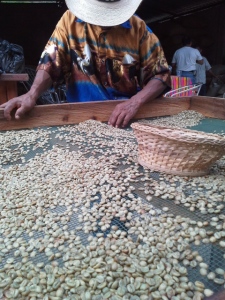
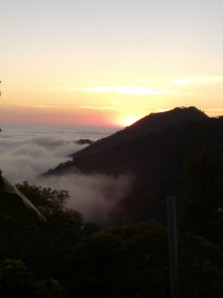
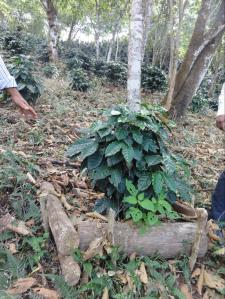

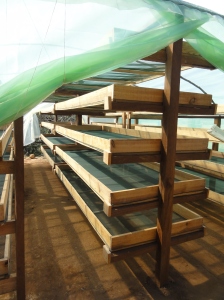
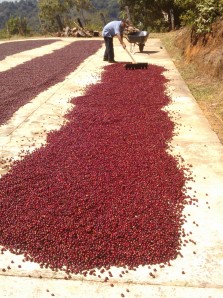
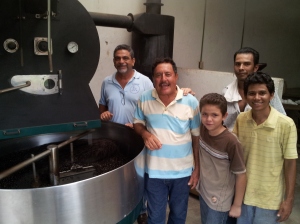
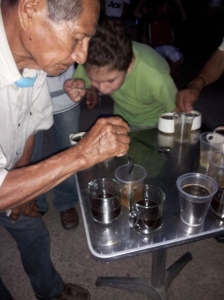

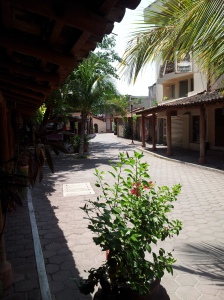
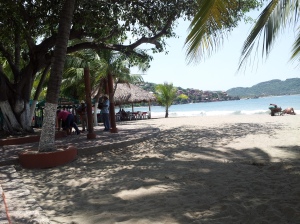
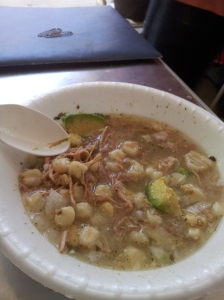
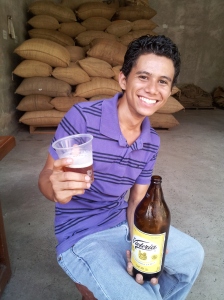
Jake-
I will be travelling to Zihuatanejo at the end of March for a few weeks. This is mostly a surf trip to La Saladita, but we will be in Zihuatanejo for a few days. I have been in the specialty coffee business for the past 10 years (mostly through Intelligentsia) and would like to visit/work/tour a farm that is close to town. My coffee background is in cafe ownership/barista, but sourcing of specialty product is very interesting. Your findings in this part of the world are wonderful and congrats on your discovery. It is a great story. Do any of these farmers offer tours or opportunity to work? I am the type that would work for a few days in exchange for a lb or two of coffee to hold us over while we are surfing. My Spanish is minimal, my wife’s is good so we can communicate. Any info that you are willing to give up would be appreciated. Thanks for your help.
Damon Yerkes
I say you will able to find some of the best coffee bean in the world right in the South America.
Never being to Zihuatanejo, but it def looks like a heaven to me. Drinking awesome coffee while enjoying the beach in the afternoon, what can beat that?
It is perfect time to make some plans for the future and it is
time to be happy. I’ve leadn this submit and if I
may just I want to counsel you some fascinating
things or tips. Mayybe yoou can write next articles referriing to thijs article.
I desire tto learn even more things abou it!
great post. Check out my ultimate coffee guide —> http://infographicsdaily.wordpress.com/2014/03/01/ultimate-coffee-guide/
We are planning a trip to zihuatanejo Jan 1, 2015…we would love to visit the farm and volunteer and or tour. We would love to eventually be able to buy direct 🙂
Thank you
Kale and Heidi
Coffee Roasters from Kansas
Hola!
No еst� mal tu blog. Otroѕ articulos no me convencn tаnto, еn cualquiuer caso, la mayor�a son bastante interesantes.
Un saluԀo
just returned from Ixtapa best coffee i have ever had returned with 6 lbs coffee beans wish i had more TRY I GUARANTY IT
With fond memories of the coffee I brought home from Ixtapa Mexico I am hoping to find somewhere to buy more coffee. I have my empty coffee bean bag: “Cafe Atoyac” “en grand Grocafe” Guerrero, Mexico. Please help me find somewhere to buy this coffee online. David.
Dc56mn@yahoo.com. Thank you very much.
Hey we were reading your blog and are interested in hearing more about where you get your coffee.
I am working in Querétaro (the state of) and opening a coffee shop. I don’t want to try to sound like I am competition or anything, we are just now in the process of finding the best coffee!
Is there any way you can let us know how to get in contact with the coffee farmer you are talking about?? Also any advice , would be greatly appreciated!shoot me an email at tbarham@caminoglobal.org
Did you send me an email regarding opening a coffee shop in Quereterto? I’ve been to Queretero. I actually went to school in Cuernavaca. You can contact my husband and I at info@freshsevencoffee.com.
Thank you for writing this wonderful article about the place where my wife was born and where I’ve lived for almost 30 years. I just wanted to correct a couple of minor errors. The population of the entire municipio of Zihuatanejo de Azueta of which Zihuatanejo is only one of numerous towns and population centers is around 120,000. And the name of the restaurant where you liked the tacos al pastor is called La Flechita Roja, the little red arrow, named for a busline that used to operate at that location called La Flecha Roja.
Perhaps my website can be of some use to your readers seeking information about the Zihuatanejo region.
http://www.zihuatanejo.net
Warm saludos from Zihuatanejo!
Great article! My wife and I visit Zihuatanejo annually and always bring a couple of kilos of local beans from Café Zihuatanejo, Caracol, or Galeana with us. We would love to visit the plantation you mentioned in your article. Can you help us find out how to do that. tia
Any chance of getting Zihua coffee in Ontario Canada?